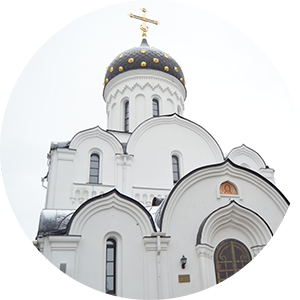We
haven't heard about iconoclasm for many centuries now. Icons are no longer
destroyed, like they were in the 8th and early 9th century. Sadly, the struggle
with the image of God is apparently still going on. It happens in every person's
heart because a human being is made in God's image but the sin in our hearts
attempts to defile and destroy this image.
If we
look at the history of art, we'll discover that our civilization is rooted in
antiquity. The Ancient Greek and Ancient Roman art was anthropocentric, i.e.,
focused on the human. Ancient artists recognised an amazing mystery in every
human being and tried to uncover it. If we look at the Greek and Egyptian works
of art, we'll see that they always portray humans. Unfortunately, even though
those humans were created in the image of God, they had the sin living inside
their hearts, and that was why icon painting could not emerge during those
times.
When
Jesus Christ, the God-man, came into this world, we begin to see a deified human
being in an icon. It's like a bridge with God becoming human on the one side
and a human becoming like God on the other side. It is in icons that we
encounter the real human being, the true beauty that is ever-present in Jesus
Christ. The Christian civilization has God-man, rather than just the Man, in
the centre.
Unluckily,
our modern world brings the sinful, defective, and crippled human being back
into the spotlight. That's why we say that the struggle with the icon goes on
even today, in a sense. We must be aware of the fact that in a certain sense
every person, every Christian, is an icon painter. You don't have to be a
professional icon painter: if you live with God, there's an icon being painted
in your soul. I suppose that this icon must be visible not just to yourself but
also to all other people, so that they could see that we're different and that
there is Christ shining through our eyes, words, and actions. More often than
not, we fail to be the example and the image of God that we ought to be.
I recall
how I was invited to speak about the icon in front of some people who knew
little, if anything, about the Church. It was in the Fine Arts Museum. The tour
guide said, "Father, please tell them more about miracles. People like to
hear about miracles." I thought, "Of course, we all know that
miracles happen when people pray in front of icons. The Lord responds to their
prayers and makes miracles to reward their faith. However, there is another
miracle, namely, the creation of an icon. Who paints icons? A weak human being,
with his personal story and his problems. In spite of that the Lord performs
this amazing miracle through that poor person. It's a miracle, indeed! It is
quiet and unimpressive but it "is" a miracle, it's so beautiful and so near, so
close to our daily lives. This miracle happens not because that person is
especially talented but thanks to the prayer of the entire Church."
I heard a
priest say, "Icons are born out of people's prayers." If you go to
Tretyakov Gallery and look at the 14th-15th century icons, you will see how
people used to pray at that time and how spiritually advanced they were. Their
spirituality revealed itself in their icons. When we look at contemporary
icons, we have to admit that our prayers aren't as fervent as they used to be.
We should be aware of the fact that it is our prayer that determines the kinds
of images that icon painters can paint. I say so because I work in this field.
July 30, 2018
St.
Elisabeth Convent

















CONVERSATION